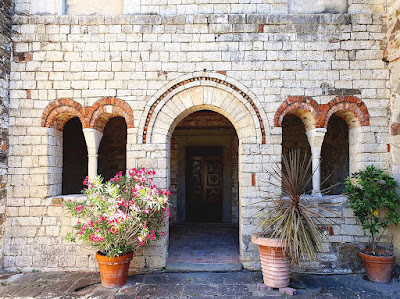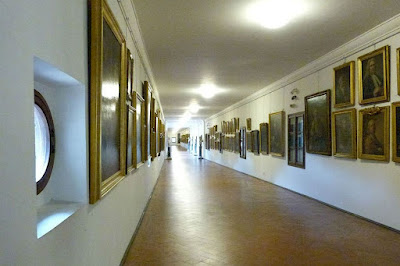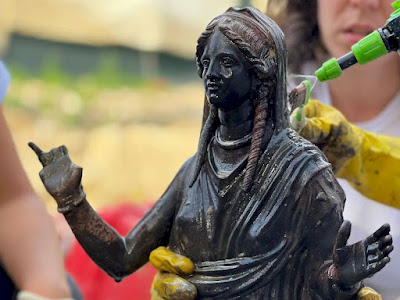Niccolò Machiavelli died almost 500 years ago on 21 June 1527 at the age of 58, and yet he lives on as a founder of modern political analysis and the inspiration for the expression "Machiavellian". He was a great Florentine who is probably too narrowly identified as the author of Il Principe (The Prince) which he wrote around 1513. It was published in 1532, five years after his death. For many years, Machiavelli served as a senior official in the Florentine Republic with responsibilities in diplomatic and military affairs. He wrote comedies, carnival songs and poetry, and he has often been called the father of modern political philosophy and political science
Portrait of Niccolò Machiavelli by Santi di Tito
In 1494, Florence restored the republic, expelling the Medici family that had ruled Florence for some sixty years. In August 1512, the Medici, backed by Pope Julius II, used Spanish troops to defeat the Florentines at Prato. In the wake of the siege, Piero Soderini resigned as Florentine head of state and fled into exile. The experience would, like Machiavelli's time in foreign courts and with the Borgia, heavily influence his political writings. The Florentine city-state and the republic were dissolved, with Machiavelli then being removed from office and banished from the city for a year. In 1513, the Medici accused him of conspiracy against them and had him imprisoned. Despite being subjected to torture, he denied involvement and was released after three weeks.
L'Albergaccio - Casa Machiavelli
Machiavelli then retired to his farm estate at Sant'Andrea in Percussina, near San Casciano in Val di Pesa, where he devoted himself to studying and writing political treatises. During this period, he represented the Florentine Republic on diplomatic visits to France, Germany and elsewhere in Italy. A wonderful letter from Machiavelli to Francesco Vettori, dated 10 December 1513, evokes Machiavelli's life in rural exile:
"When evening comes, I return home and enter my study; and at the door I take off my everyday clothes, covered in mud and dirt, and put on royal and courtly clothes; and dressed appropriately, I enter the ancient courts of ancient men, where, lovingly received by them, I feed on that food which is mine only and for which I was born; where I am not ashamed to speak with them and ask them the reason for their actions; and they, out of their humanity, answer me; and for four hours I do not feel any boredom; I forget every worry, I do not fear poverty, I am not frightened by death; I transfer myself entirely to them. And because Dante says that one does not make science without retaining what has been understood, I have noted what I have capitalised on through their conversation, and composed a pamphlet entitled Principatibus (Of Principalities, later published as in Italian as Il Principe)."
The main idea of Machiavelli's The Prince closely reflects the times in which he lived. An effective ruler must understand how to seize and maintain power rather than attain some kind of moral purity. In other words, princes should learn to rule rather than learn to be "good". As a treatise, the main contribution of "The Prince" to the history of political thought is the distinction it makes between political realism and political idealism. In contrast with Plato and Aristotle, Machiavelli insisted that an imaginary ideal society is not a model that a prince should adopt. Joshua Kaplan maintains that Machiavelli emancipated politics from theology and moral philosophy. He undertook to describe simply what rulers actually did and thus anticipated the scientific spirit in which questions of good and bad are ignored, and the observer attempts to discover only what really happens.
Machiavelli was buried at the Church of Santa Croce in Florence. In 1789 George Nassau Clavering and Pietro Leopoldo, Grand Duke of Tuscany, initiated the construction of a monument on Machiavelli's tomb. It was sculpted by Innocenzo Spinazzi, with an epitaph by Ferroni inscribed on it.
Machiavelli's house is now a well-regarded restaurant where the room and table where Machiavelli worked are preserved and can be visited by patrons of the restaurant.
More about Niccolò Machiavelli.
|
Author: Anna Maria Baldini































